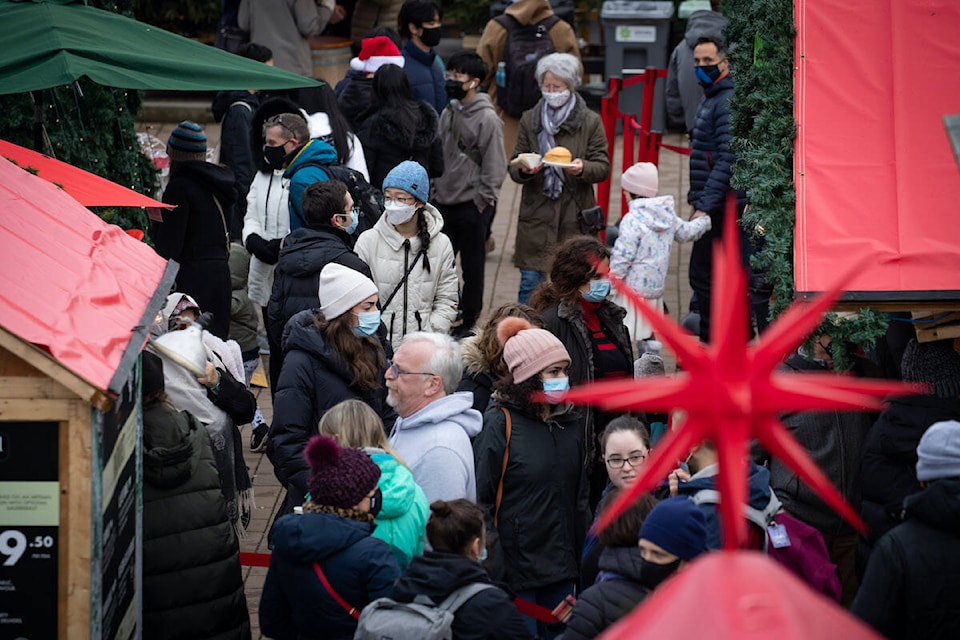As we close the books on 2021 and nervously contemplate a third consecutive year of living with COVID-19, we can take comfort that B.C.’s economy and labour market have largely healed after the dramatic slump experienced in the spring of 2020.
Over the last 18 months, overall economic production (gross domestic product, or GDP) has rebounded. In addition, B.C.’s employment recovery has been the strongest in the country, with job growth in 2021 expected to exceed 6 per cent. British Columbia was the first province to return to pre-COVID employment levels – a milestone achieved several months ago.
Job creation has been impressive, extending from energy and mining to manufacturing, professional and scientific services, wholesale trade, logistics, and the public sector — where employment growth has been especially pronounced.
That said, businesses in some parts of the B.C. economy are still hurting amid persistent COVID-related limitations, shifts in consumer behaviour and buying habits, and a severely hobbled tourism and travel sector.
Employment has not fully recovered in several important industries, including construction, hospitality, accommodation, leisure and entertainment, and air transportation – most of which are part of the broad tourism economy, where the damage done by the pandemic is most visible.
Moreover, B.C.’s unemployment rate remains higher than it was back in 2018-19, suggesting that some degree of “slack” still exists in the labour market. Finally, the severe flooding that the province endured in November will detract slightly from economic growth in 2021 – but then boost aggregate spending in 2022, as rebuilding and repair work accelerates and the $5 billion in assistance promised by the federal government begins to flow.
With the significant normalization of economic and business activity following the lockdowns imposed in 2020, the demand for workers has grown faster than the supply, aggravating labour market pressures.
This is apparent in Statistics Canada’s job vacancy survey, which estimates the number of unfilled positions as a share of all paid jobs. In B.C., the vacancy rate now stands at 7.4 per cent, the highest in the country. This equates to 173,000 unfilled positions. (For Canada as a whole, there are more than one million vacant jobs.) Shortages of workers are widespread, affecting retail trade, health care and social services, advanced technology, trucking, and manufacturing, among others.
Oddly, labour shortages are also being reported in sectors where employment is not yet back to pre-COVID levels, such as restaurants, bars and ski resorts. In these industries, some former employees have shifted to other lines of work or left the labour force entirely. The slowdown in immigration is also impacting some service businesses that depend on temporary foreign workers.
Looking ahead, the unwelcome arrival of yet another COVID-19 variant, Omicron, clouds the economic picture – for the world, and also for B.C. The new variant is sweeping through Europe and will soon be the dominant strain of the virus in North America.

Far more transmissible than previous versions of the disease, it has the potential to hamper economic growth by prompting governments to re-introduce new restrictions (as in the Netherlands in mid-December and Quebec this week), disrupting global manufacturing and transport supply chains, and keeping risk-averse consumers stuck at home. Already, economic forecasters have been trimming their growth projections for the coming year.
The table below summarizes the Business Council of B.C.’s most recent forecast for the provincial economy.
After a sharp rebound in GDP, employment, and retail sales in 2021, we expect slower but still solid growth in 2022. The risks to the forecast are firmly on the downside, with the effects of the Omicron variant on domestic consumer spending as well as B.C.’s international exports being the principal ones.
In addition, higher inflation could lead to earlier and more aggressive action to hike interest rates by the Bank of Canada – a development that would hit housing markets and weigh on consumer purchases of durable goods like automobiles and furniture.
FINLAYSON:
Jock Finlayson is a senior policy advisor with the B.C. business council.
Like us on and follow us on .



